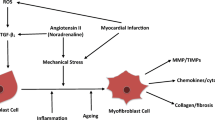Abstract
Decellularized myocardium has been proposed to construct tissue engineered heart tissue, providing the advantage of natural extracellular architecture. Various decellularization protocols have been developed, but the impact of individual decellularization reagent in the protocol remains unclear. The aim of this study is to evaluate the structural impact of three commonly used decellularization reagents on the porcine myocardium. We decellularized porcine heart tissue with trypsin, Triton X-100 or SDS, and analyzed the morphological characteristics of the remaining tissue by SEM, AFM and two-photon LSM. We further recellularized the scaffold with rat myocardial fibroblasts and cardiomyocytes separately. According to the H&E staining and DNA quantification, SDS decellularized more efficiently in comparison to the other two reagents. Moreover, we found distinct surface microarchitecture differences among groups. The changed structure of tissue might result in varied proliferation myocardial fibroblasts and biophysical performance of the engineered heart tissue. This study demonstrated that the microstructure of decellularized porcine heart tissue vary with decellularization agents. Compared to trypsin and Triton X-100, SDS not only decellularized more efficiently but also preserved the biocompatible microstructure of ECM for recellularization.





Similar content being viewed by others
References
Sakata Y, Shimokawa H. Epidemiology of heart failure in Asia. Circ J. 2013;77:2209–17.
Ott HC, Matthiesen TS, Goh SK, Black LD, Kren SM, Netoff TI, et al. Perfusion-decellularized matrix: using nature’s platform to engineer a bioartificial heart. Nat Med. 2008;14:213–21.
Weymann A, Loganathan S, Takahashi H, Schies C, Claus B, Hirschberg K, et al. Development and evaluation of a perfusion decellularization porcine heart model-generation of 3-dimensional myocardial neoscaffolds. Circ J. 2011;75:852–60.
Arenas-Herrera JE, Ko IK, Atala A, Yoo JJ. Decellularization for whole organ bioengineering. Biomed Mater. 2013;2013(8):014106.
Xu H, Xu B, Yang Q, Li X, Ma X, Xia Q, et al. Comparison of decellularization protocols for preparing a decellularized porcine annulus fibrosus scaffold. PLoS One. 2014;9:e86723. doi:10.1371/journal.pone.0086723.
Patra C, Ricciardi F, Engel FB. The functional properties of nephronectin: an adhesion molecule for cardiac tissue engineering. Biomaterials. 2012;33:4327–35.
Ye X, Hu X, Wang H, Liu J, Zhao Q. Polyelectrolyte multilayer film on decellularized porcine aortic valve can reduce the adhesion of blood cells without affecting the growth of human circulating progenitor cells. Acta Biomater. 2012;8:1057–67.
Dainese L, Guarino A, Burba I, Esposito G, Pompilio G, Polvani G, et al. Heart valve engineering: decellularized aortic homograft seeded with human cardiac stromal cells. J Heart Valve Dis. 2012;21:125–34.
Zhou J, Fritze O, Schleicher M, Wendel HP, Schenke-Layland K, Harasztosi C, et al. Impact of heart valve decellularization on 3-D ultrastructure, immunogenicity and thrombogenicity. Biomaterials. 2010;31:2549–54.
Weymann A, Schmack B, Okada T, Soós P, Istók R, Radovits T, et al. Reendothelialization of human heart valve neoscaffolds using umbilical cord-derived endothelial cells. Circ J. 2013;77:207–16.
Ramesh B, Mathapati S, Galla S, Cherian KM, Guhathakurta S. Crosslinked acellular saphenous vein for small-diameter vascular graft. Asian Cardiovasc Thorac Ann. 2013;21:293–302.
Oberwallner B, Brodarac A, Anić P, Sarić T, Wassilew K, Neef K, et al. Human cardiac extracellular matrix supports myocardial lineage commitment of pluripotent stem cells. Eur J Cardiothorac Surg. 2014;. doi:10.1093/ejcts/ezu163.
Cebotari S, Tudorache I, Ciubotaru A, Boethig D, Sarikouch S, Goerler A, et al. Use of fresh decellularized allografts for pulmonary valve replacement may reduce the reoperation rate in children and young adults: early report. Circulation. 2011;124:S115–23.
Remlinger NT, Wearden PD, Gilbert TW. Procedure for decellularization of porcine heart by retrograde coronary perfusion. J Vis Exp. 2012;70:e50059. doi:10.3791/50059.
Akhyari P, Aubin H, Gwanmesia P, Barth M, Hoffmann S, Huelsmann J, et al. The quest for an optimized protocol for whole-heart decellularization: a comparison of three popular and a novel decellularization technique and their diverse effects on crucial extracellular matrix qualities. Tissue Eng Part C. 2011;17:915–26.
Witzenburg C, Raghupathy R, Kren SM, Taylor DA, Barocas VH. Mechanical changes in the rat right ventricle with decellularization. J Biomech. 2012;45:842–9.
Hooks DA, Trew ML, Caldwell BJ, Sands GB, LeGrice IJ, Smaill BH. Laminar arrangement of ventricular myocytes influences electrical behavior of the heart. Circ Res. 2007;101:e103–12. doi:10.1161/CIRCRESAHA.107.161075.
Engelmayr GC Jr, Cheng M, Bettinger CJ, Borenstein JT, Langer R, Freed LE. Accordion-like honeycombs for tissue engineering of cardiac anisotropy. Nat Mater. 2008;7:1003–10.
Eitan Y, Sarig U, Dahan N, Machluf M. Acellular cardiac extracellular matrix as a scaffold for tissue engineering: in vitro cell support, remodeling, and biocompatibility. Tissue Eng Part C. 2010;16:671–83.
Salick MR, Napiwocki BN, Sha J, Knight GT, Chindhy SA, Kamp TJ, Ashton RS, Crone WC. Micropattern width dependent sarcomere development in human ESC-derived cardiomyocytes. Biomaterials. 2014;35:4454–64.
Acknowledgments
We are indebted to W. Bian from the Shanghai Institute of Biochemistry and Cell Biology (SIBCB) for help with two-photon LSM and to S. L. Wang from East China University of Science and Technology for help with AFM.
Author information
Authors and Affiliations
Corresponding authors
Ethics declarations
Funding
The research was partially financially supported by the National Natural Science Foundation of China (Grant Nos. 81000096, 81200093, 31330029 and 81571826).
Electronic supplementary material
Below is the link to the electronic supplementary material.
Supplementary material 1 (MOV 4307 kb) Representative video of the rCMs seeded heart tissue, which is decellularized with Trypsin
Supplementary material 2 (MOV 4685 kb) Representative video of the rCMs seeded heart tissue, which is decellularized with SDS
Supplementary material 3 (MOV 4908 kb) Representative video of the rCMs seeded heart tissue, which is decellularized with Triton X-100
Rights and permissions
About this article
Cite this article
Ye, X., Wang, H., Gong, W. et al. Impact of decellularization on porcine myocardium as scaffold for tissue engineered heart tissue. J Mater Sci: Mater Med 27, 70 (2016). https://doi.org/10.1007/s10856-016-5683-8
Received:
Accepted:
Published:
DOI: https://doi.org/10.1007/s10856-016-5683-8




